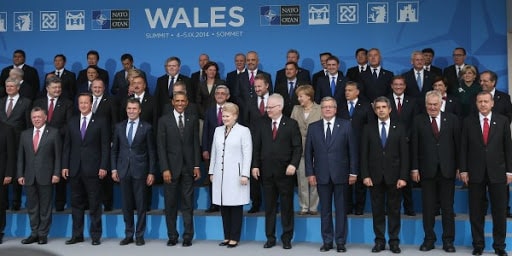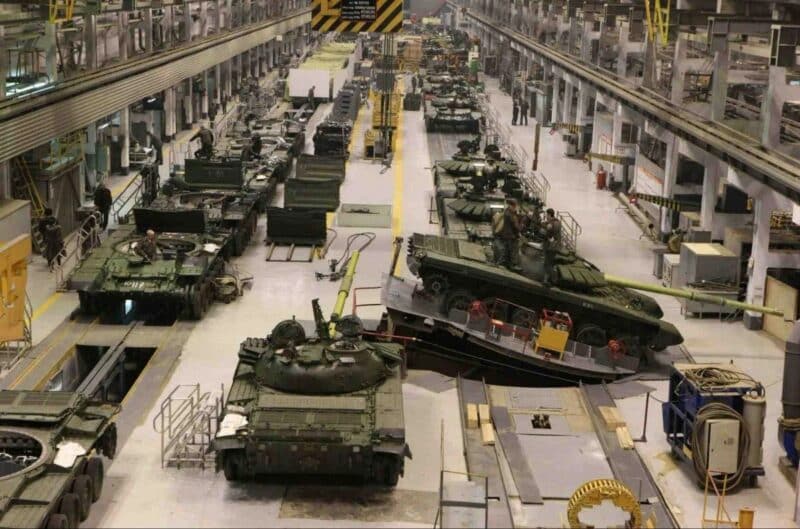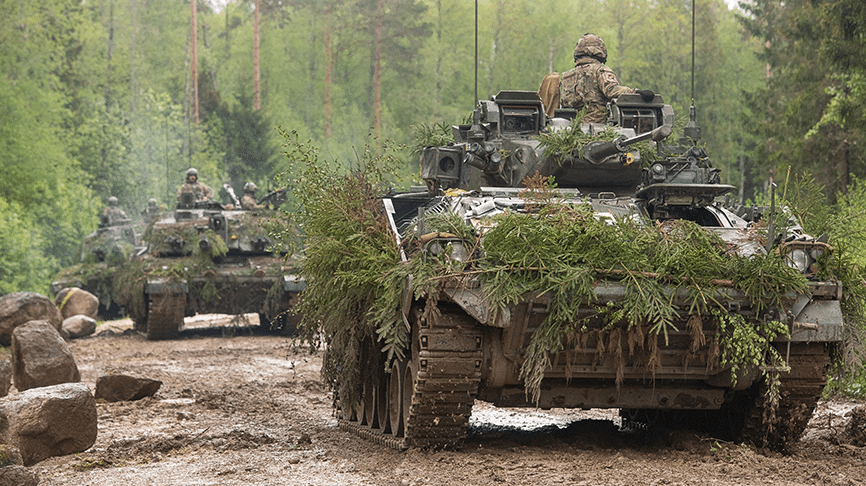With the exception of a few Eastern European countries, most European states have embarked on a trajectory to reach, sometimes slightly exceed, a defense effort equivalent to 2% of their GDP, while the threat, today, is incommensurate with what it was ten years ago, and that a new threat now weighs on American protection of Europe, and Washington's support for Ukraine.
Where does this threshold come from, and is it adapted to the security situation today? Otherwise, what would be the required value of the European defense effort, to increase competition with Russia, while supporting Ukraine and ensuring the security of its interests in the theaters belonging to its area of responsibility?
In this section:
The defense effort threshold of 2% GDP and its limits
As previously mentioned on this site, the defense investment threshold established at 2% of GDP by NATO, on the occasion of the 2014 Cardiff summit, is in no way linked to a complex calculation of the means necessary to face future defense challenges, which were also very differently envisaged in 2014 than they are actually ten years later.
On the contrary, this threshold, like its deadline of 2025, were defined politically, as the largest amount that could be accepted by all the NATO members present at this summit.

NATO negotiators, who managed to extract this agreement, in particular from certain countries particularly reluctant to increase their defense investments, such as Germany, but also Italy, Spain, Belgium, Netherlands and many others were instructed to obtain the best possible result, in particular to rebalance the blatant gap between the US defense effort and that of a large majority of other NATO members, France included.
The 2025 deadline was also the most effective tool to overcome this reluctance. The leaders present at the Cardiff summit knew full well that they would no longer be in office on that date, to accept the fact of not having satisfied it.
Moreover, we had to wait until the end of the 2010s, and sometimes the start of Russia's invasion of Ukraine, to create the momentum to achieve this objective by 2025, while several countries, of which Italy, Belgium, or Spain still believe that they will reach this threshold, but beyond this deadline.
In any case, not only was the 2% GDP threshold not designed to constitute sufficient military power to guarantee the security of the Alliance, but at the time it was designed, the perception of risks, widely shared, including in the United States, was far from considering the developments that have taken place in Europe since that date.
What is the European equivalent of Russia's defense budget?
So, if the 2% threshold is not based on any capability analysis consistent with the reality of the threats, to what level of investment should the Europeans bring their defense effort to do this today?

Admitting that the Europeans must be able to contain the Russian threat alone, it would be appropriate for them to align resources equivalent to those that the Russian armies have and will have in the years to come.
How do European and Russian defense budgets compare?
One might think that this is already the case. Indeed, the budget of the Russian armies, around €110 billion in 2024, is lower than that of the Europeans, around €270 billion, close to the threshold of 2%, on average, expected by NATO.
This comparison, however, is erroneous. In fact, the Russian armies pay for their defense equipment, between 3 and 5 times cheaper, than the Europeans, for equivalent equipment. Thus, a Leopard A new 2A7 costs between €15 and €18 million, depending on standards and equipment, compared to less than €2 million for a T-90M.
The Su-35 fighter costs less than €30 million, the Su-57 around €37 million, compared to around €100 million per Rafale et Typhoon, and €120m concerning the F-35A. In the naval field, the Admiral Gorshkov frigates and the Iassen-M submarines were acquired for €300 million and €800 million respectively, compared to €700 million for an FDI, and around €1,8 billion for an SSN. Astute.
This gap is also found in personnel costs. Thus, the 1,35 million men, including 600 conscripts, of the Russian armies, require a total budget of €000 billion. For 45 men, the French armies spend almost €207.000 billion each year, a ratio of 20 to 1, even though Russia spends more massively than usual, in bonuses and salaries, to attract volunteers for the special military operation in Ukraine.


75% of this article remains to read,
Subscribe to access it!
The Classic subscriptions provide access to
articles in their full version, and without advertising,
from 6,90 €.
Newsletter subscription
Register for the Meta-Defense Newsletter to receive the
latest fashion articles daily or weekly

